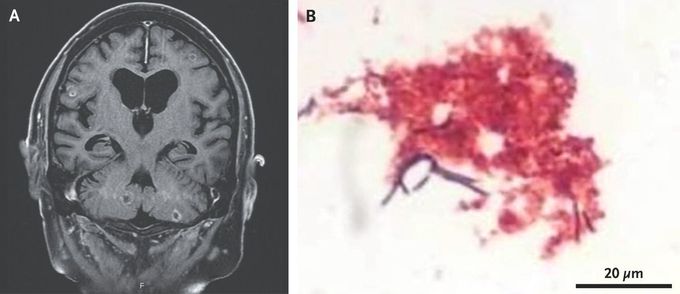


Nocardial Brain Abscesses
An 80-year-old man undergoing treatment for multiple myeloma presented to the emergency department with a 2-week history of low-grade fevers and confusion. On examination, he had slurred speech and was not oriented to place or time. A computed tomographic image of the head and a radiograph of the chest were normal. Despite empirical treatment with broad-spectrum antibiotic agents while further evaluation was ongoing, the patient became obtunded. Magnetic resonance imaging of the head revealed multiple ring-enhancing lesions (Panel A). A lumbar puncture was performed. Cerebrospinal fluid (CSF) analysis showed 923 nucleated cells per microliter (reference range, 0 to 5), of which 91% were neutrophils; the glucose level was 36 mg per deciliter (2.0 mmol per liter; reference range, 40 to 80 mg per deciliter [2.2 to 4.4 mmol per liter]), and the total protein level was 147 mg per deciliter (reference range, 15 to 45). A CSF culture grew Nocardia farcinica (Panel B). Nocardia are aerobic gram-positive bacilli that can invade the lung, skin, or central nervous system, especially in immunocompromised persons. The patient was treated with a prolonged course of antibiotics. His hospital course was complicated by a subarachnoid hemorrhage, a mycotic aneurysm, and hemiplegia. He was ultimately discharged home.

